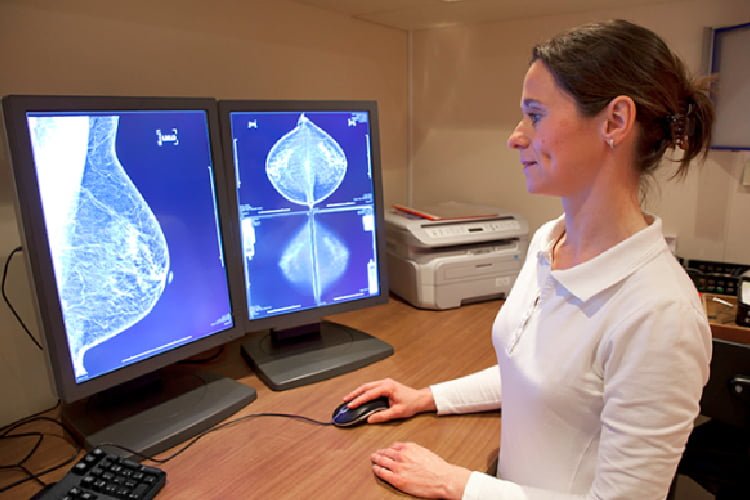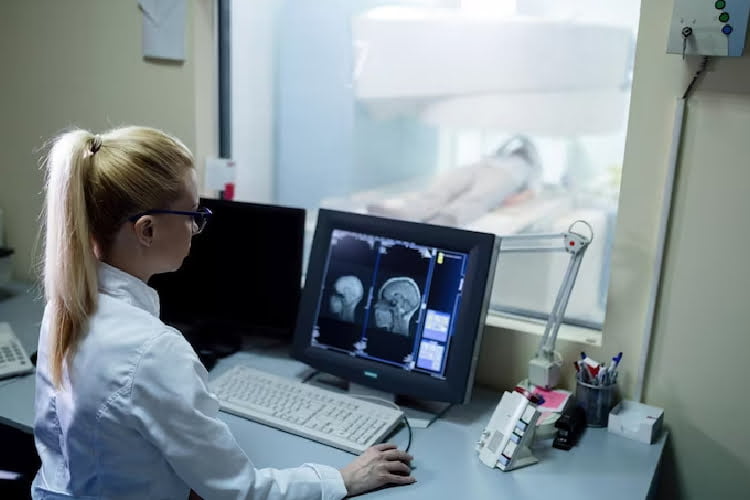A Radiology Information System (RIS) is an integrated network of computer-based applications used to manage medical imaging services. It provides a means to electronically capture, store, and manipulate patient information, exam results, and images. RIS enables radiologists to increase the efficiency of their workflow by automating processes such as scheduling, patient registration, imaging order entry, report distribution, billing, and quality assurance. RIS components typically include patient demographics, scheduling, order entry, imaging data acquisition, report distribution, billing, and quality assurance.
Patient demographics stores patient information such as name, address, and insurance information. Scheduling assists in the tracking of patient appointments and imaging examinations. Order entry allows healthcare providers to enter patient orders for imaging procedures. Imaging data acquisition involves capturing, processing, and storing images. Report distribution is the process of distributing radiology reports to healthcare providers. Billing and quality assurance are related to the financial management and quality assurance of the radiology department.
What Is A Radiology Information System?
A Radiology Information System (RIS) is a computerized system designed to manage imaging departments within a healthcare facility. This system allows radiology personnel to electronically store and access patient data, images, and reports. It enables them to schedule procedures, process billing, and track patient outcomes. RIS also serves as a communication tool, connecting multiple departments such as radiology, nursing, and billing. By providing visibility into patient records across the healthcare facility, RIS can help streamline patient care.

Why Use A Radiology Information System?
Radiology Information Systems provide many benefits to healthcare facilities. They can help reduce paperwork, improve accuracy and efficiency, and reduce medical errors. RIS also streamlines the process of communication between medical staff and other departments, such as billing and scheduling. By having access to all patient records in one place, it is easier for medical staff to quickly access the information they need.
How To Implement A Radiology Information System?
Implementing a Radiology Information System can be complex and time-consuming. It is important to have a well-defined plan before beginning the process. This should include identifying the goals of the organization and the stakeholders involved. Once the goals have been identified, the next step is to select the right system for the organization’s needs. This should include researching different systems, evaluating features and costs, and testing the system. Once the system is chosen, the organization should develop a training plan for staff, and ensure that the system is properly installed and configured.
Tips For Optimizing A Radiology Information System
Radiology Information Systems can be optimized to improve efficiency and accuracy. To do this, it is important to regularly review and update the system. This includes updating patient records, making sure the system is up to date, and ensuring that all staff is properly trained on how to use the system. It is also important to review the system’s performance and make changes as necessary to improve workflow.
Benefits Of Radiology Information Systems
Radiology Information Systems (RIS) are computerized systems used to store, manage and distribute patient information in a radiology department. Additionally, It can provide many benefits for healthcare providers, including improved patient care, improved workflow, and reduced costs.
Improved patient care is one of the most notable benefits of RIS. A RIS can store patient records, images, and test results, which can be easily accessed by healthcare providers. This allows for a more accurate diagnosis and treatment of patients. It can also help reduce wait times for patients and improve their overall experience in the healthcare facility.
Finally, RIS can help reduce costs. By automating tasks, RIS can help reduce the need for additional staff, which can result in significant savings. Additionally, by providing a central repository for patient data, RIS can help reduce the need for additional storage and hardware, which can also help save money.
Best Practices For Radiology Information Systems
Organizations should develop best practices for their Radiology Information Systems. This includes setting up a system that is easy to use, regularly updating patient records, training staff on how to use the system, and ensuring the system is up to date. Additionally, organizations should review the system’s performance and make changes as needed to optimize workflow.
Security Considerations With Radiology Information Systems
Security is an important consideration when implementing a Radiology Information System. Organizations should ensure that the system is HIPAA compliant and that all data is encrypted and securely stored. Additionally, organizations should have a plan in place to protect against unauthorized access and data breaches.
Conclusion
A Radiology Information System (RIS) is a comprehensive and powerful healthcare solution. It automates the management of patient records and imaging data, from the point of entry to the point of interpretation. Additionally, RIS components include a database for patient data, an imaging archive for digitized images, a worklist for tracking examinations and communicating with modalities, and reporting tools for generating and managing reports. RIS is an important tool for radiology departments, as it helps to streamline processes, reduce errors, and improve workflow. It also helps to ensure that patient data is secure, accurate, and up to date. RIS is an essential component of any healthcare organization’s technology infrastructure.

Stacey Jones is a clinical pharmacist from Iowa with a passion for helping people lead healthier, more fulfilled lives. She has been a licensed pharmacist for over 15 years and is currently a clinical pharmacist specialist in the hospital setting. For the last several years, Stacey has spoken at national conventions and led workshops on utilizing pharmacy services, medication safety, and optimizing medication accessibility in hospitals. Through her blog posts, Stacey hopes to provide the latest tips and advice on all things pharmacy related to her readers.



